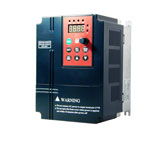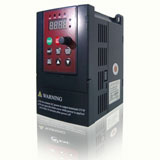Variable frequency drive history
There have been grand past events that should have been captured but unfortunately nobody took the time to do so. Having arrived on the motor drive scene in 1970 at US Electrical Motors, just years after they were acquired by Emerson Electric, I saw a lot of the early action. One of the biggest at the time was the Exxon fiasco that was going to promote Mr. Baker's technology into a $multi-billion industry in just "a few years". It was the days of high frequency (5 usec) SCR's with commutation circuits and a 15 horsepower drive housed in a cabinet 5 ft X 3 ft. X 18 inches. We have come along way. Another memorable moment was attending the University of Wisconsin motor drive 3-day seminar and having Dr. Tom Lipo put up one of his famous d-q matrix equations on the board. When he had filled the whole board, we were to learn disappointingly that what he had written was only the first term of the equation. Does anyone have a copy of the Bedford and Hoft Text book yet? Both came out of GE. Bedford was quite memorable to meet. Dr. Hoft taught for many years at the University of Missouri, Rolla. Aaah those were the days...I am sure others have fond memories. However, I don't know of anyone who has written all of it all down.
DuPont purchased electronic fiber drives 1960/1961. Westinghouse built the variable voltage converter and contracted with PESCO to build the Inverter. In 1966 Dupont purchased drives Borg Warner, Series 550. Design had variable input transformer for V/hz control and 6 pulse SCR inverter. This was followed 1967 with Borg Warner Series 650. They had a 6 pulse SCR inverter followed by a variable output transformer. In 1968 Dupont tried multipulse inverters 12 and 24 made by GE, Philladelphia. Borg Warner ws purchased in late 60's by Emerson. In the early 1970's the Emerson furnished drives to Dupont series 1000, 2000 and 4000 with choppers for V/hz controls and 6 pulse inverter stages. These inverters were used with synchronous reluctance and permanent magnet motors. Typically 32 or 64 were run off each drive. Motors were across the line started, so inverters were sized for the FLA 2-5AAC and locked rotor amps 10-50 AAC each. 63 running and 1 starting drew approx 200 AAC. Some drives were in continuous regen so later schemes incorporated common bus for 8-10 drives. Power loss Ridethru immunity was also a concern.
Modern PWM frequency drive was first developed in Stromberg Finland early 1960s. First commercial break through was Helsinki metro at 1972. This development was lead by Martti Harmoinen. They also developed first commercial cyclo converter in 80s and many other pioneering innovations.
After retirement Martti Harmoinen published book 'SAMIN tarina' (The Story of SAMI). SAMI was Strombergs brand for variable frequency drives, which was vanished since Asea bought Stömberg in 1987. In 1988 Asea merged to Braun Boweri and name changed to ABB.
DuPont purchased electronic fiber drives 1960/1961. Westinghouse built the variable voltage converter and contracted with PESCO to build the Inverter. In 1966 Dupont purchased drives Borg Warner, Series 550. Design had variable input transformer for V/hz control and 6 pulse SCR inverter. This was followed 1967 with Borg Warner Series 650. They had a 6 pulse SCR inverter followed by a variable output transformer. In 1968 Dupont tried multipulse inverters 12 and 24 made by GE, Philladelphia. Borg Warner ws purchased in late 60's by Emerson. In the early 1970's the Emerson furnished drives to Dupont series 1000, 2000 and 4000 with choppers for V/hz controls and 6 pulse inverter stages. These inverters were used with synchronous reluctance and permanent magnet motors. Typically 32 or 64 were run off each drive. Motors were across the line started, so inverters were sized for the FLA 2-5AAC and locked rotor amps 10-50 AAC each. 63 running and 1 starting drew approx 200 AAC. Some drives were in continuous regen so later schemes incorporated common bus for 8-10 drives. Power loss Ridethru immunity was also a concern.
Modern PWM frequency drive was first developed in Stromberg Finland early 1960s. First commercial break through was Helsinki metro at 1972. This development was lead by Martti Harmoinen. They also developed first commercial cyclo converter in 80s and many other pioneering innovations.
After retirement Martti Harmoinen published book 'SAMIN tarina' (The Story of SAMI). SAMI was Strombergs brand for variable frequency drives, which was vanished since Asea bought Stömberg in 1987. In 1988 Asea merged to Braun Boweri and name changed to ABB.



